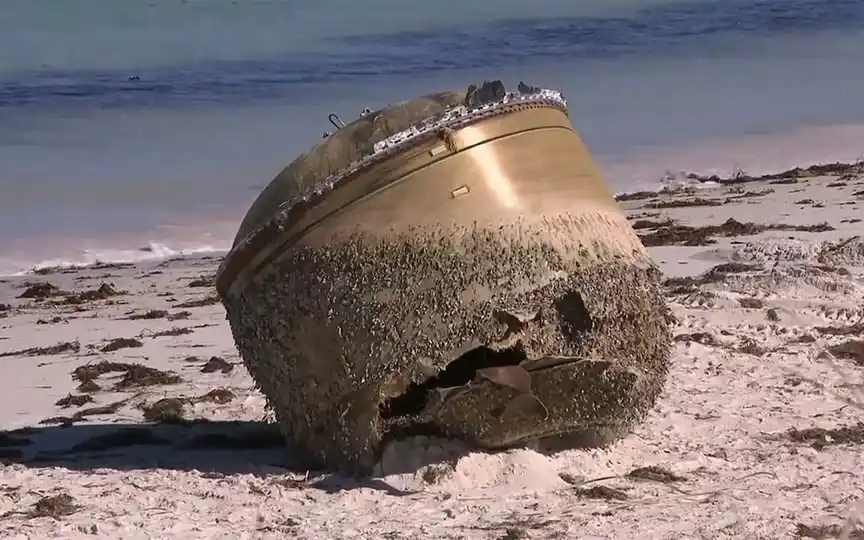Future Space Missions will Result in More Debris in Earth Orbit and on the Moon, But No One is Responsible for its Removal
Currently, the Moon is burdened with a significant amount of debris, including approximately 100 bags of human waste. As nations worldwide embark on lunar missions, the accumulation of waste on the lunar surface and in Earth’s orbit is expected to increase substantially.
In August 2023, Russia’s Luna-25 probe crashed into the surface of the Moon, while India’s Chandrayann-3 spacecraft successfully landed in the South Pole region, making India the fourth country to land on the Moon.
As more countries land on the Moon, people returning to Earth must consider what will happen to all the landers, debris, and miscellaneous debris that remains on the surface and in orbit of the Moon.
I am an astronomy professor who has written a book on the future of space travel, articles on our future beyond Earth, conflicts in space, space congestion, and the ethics of space exploration. Like many other space experts, I am concerned about the lack of space junk management.
The space is getting full
People think space is big and empty, but the earth-like environment is starting to get crowded. Governments and private companies such as SpaceX and Blue Origin are planning as many as 100 space flights over the next decade.
The near-Earth orbit is even more crowded than the space between the Earth and the Moon. That’s 100 to 500 miles straight up, compared to 240,000 miles to the Moon. Currently, there are nearly 7,700 satellites within a few hundred miles of Earth. The number may increase to several hundreds of thousands by 2027. Many of these satellites are used to deliver Internet to developing countries or to monitor agriculture and climate on Earth. Companies like SpaceX have dramatically reduced launch costs, fueling this wave of activity.
“It’s going to be like a rush-hour interstate in a blizzard, and everyone’s driving way too fast,” space launch expert Johnathan McDowell told Space.com.
The problem of space junk
All this activity creates hazards and debris. Humans have left a lot of debris on the Moon, including remnants of spacecraft such as rocket boosters after more than 50 falls, nearly 100 bags of human waste, and miscellaneous items such as feathers, golf balls, and boots. It brings with it about 200 tons of our waste.
Since no one owns the Moon, no one is responsible for keeping it clean and tidy.
The clutter in Earth’s orbit includes old spacecraft, used rocket boosters, and objects discarded by astronauts, such as a glove, wrench, and toothbrush. It also contains small debris such as paint chips.
There are about 23,000 objects larger than 10 cm (4 in) and about 100 million pieces of debris larger than 1 mm (0.04 in). Small debris may not seem like a big deal, but debris travels at 15,000 mph (24,140 km/h), 10 times faster than a bullet. At this speed, even a speck of paint can puncture a spacesuit or destroy sensitive electronics.
In 1978, NASA scientist Donald Kessler described a scenario in which collisions between orbiting pieces of debris create more debris, and the amount of debris grows exponentially, potentially rendering low-Earth orbit unusable. Experts call this “Kessler’s syndrome.”
No one is in charge there
The 1967 UN Treaty on Outer Space states that no country can “own” the Moon or any part of it and that the celestial bodies should only be used for peaceful purposes. But the treaty is silent on companies and individuals, and says nothing about how space resources can and cannot be used.
The 1979 UN Lunar Treaty considered that the Moon and its natural resources are the common heritage of mankind. However, the US, Russia and China never signed it, and the US Congress created a law in 2016 that exempted the US commercial space industry with very few restrictions.
Due to the lack of regulation, space junk is an example of “tragedies of the commons”, where many interests gain access to a common resource, and it can become depleted and unusable for all, as no one interest can prevent another from overexploiting the resource. resource.
Scientists argue that to avoid a tragedy of the commons, the orbital space environment should be seen as a global commons worthy of UN protection. The lead author of the Nature paper, which defends global society, filed an amicus brief — a type of outside commentary offering support or expertise — in the case, which went to the U.S. Court of Appeals for the District of Columbia Circuit in late 2021.
The author and his research collaborators argued that US environmental regulations should apply to space launch permits. However, the court declined to rule on the environmental issue, saying the group lacked standing.
National geopolitical and commercial interests are likely to override interplanetary conservation efforts unless the United Nations acts. The new agreement may emerge from the work of the UN Office for Outer Space Affairs, which in May 2023 created a policy document to address the sustainable development of space activities.
The UN can only regulate the activities of its member countries, but it has a project that helps member states to develop policies at the national level that promote the goals of sustainable development.
NASA created and signed the Artemis Agreements, broad but non-binding principles for peaceful cooperation in space. They have been signed by 28 countries, but China and Russia are not on the list. Private companies are also not parties to the contract, and some space entrepreneurs have deep pockets and big ambitions.
A lack of regulation and the current gold rush approach to space exploration means that space junk and debris continue to accumulate, along with the associated problems and dangers.




